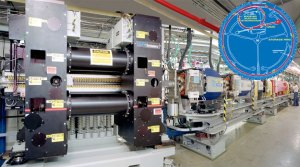 The paradigm of the “smart grid” has been embraced eagerly by everyone from staid old utilities to Silicon Valley venture capitalists, from startups and industrial giants to the Department of Energy, with its generous stimulus grants for the development. Why not? Who wouldn’t want to go from the ostensible dumb grid to a smart one? Easy sell.
The paradigm of the “smart grid” has been embraced eagerly by everyone from staid old utilities to Silicon Valley venture capitalists, from startups and industrial giants to the Department of Energy, with its generous stimulus grants for the development. Why not? Who wouldn’t want to go from the ostensible dumb grid to a smart one? Easy sell.
Big opportunities for everyone in a transformative electric network: for consumers to make smarter energy decisions, vendors to sell smart hardware and software, utilities to optimize their assets and get green “cred,” and of course, for investors to facilitate and benefit from both real and frothy growth. Win-win all around. Bigger, greener, better, smarter.
So will the electric grid come to resemble the architecture of the Internet’s pervasive communications grid? It can and it will, but not entirely for the reasons proffered by smart grid cognoscenti. You need to know just two things–two macro trends–to know why the smart grid is coming, and will be a big secular trend. First is the rising use of electricity and collateral radical increase in its importance. Second are the technologies to make the grid smarter have come of age, and just in time.
First, the demand. More than 70% of U.S. energy is used for non-transportation purposes, with the majority (60%) of all non-transport needs being met with electrons. The use of energy in the form of electricity (measured in “barrels of oil equivalent” per year) has risen 75% in the past 30 years. The Energy Information Administration forecasts the trend continuing for another 30 years. Energy used for all other purposes (again, excluding cars, planes and trains, which for context use about 5 BBOE per year) has been essentially flat for three decades and will stay essentially flat, even as the U.S. economy has grown, and is forecast to grow.
Global spending on electric transport (transmission and distribution infrastructure) already runs about $100 billion annually, with the U.S. accounting for 20% of that market. It’s an easy bet on this macro; a lot more money will be spent on electric grids. That’s pretty much all you need to know to bet on this sector, but there’s more. Add to this trend the imperative to achieve more efficiency from the electric system, reliably and securely. This can only come from adding more smarts to the grid. Growth will be proportionally faster on new technologies to add smarts to the old.
